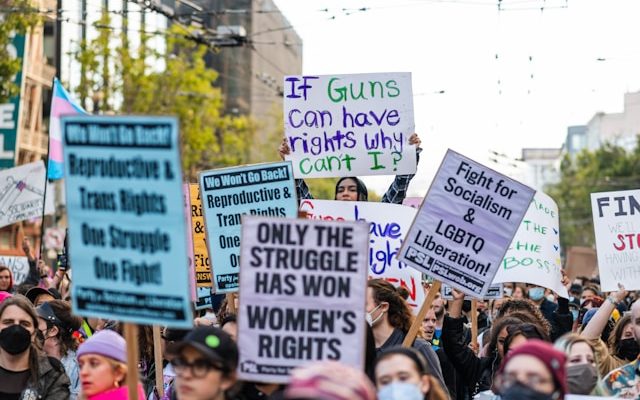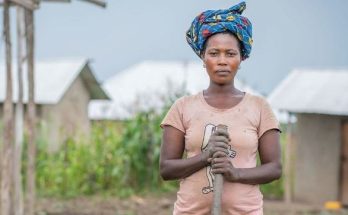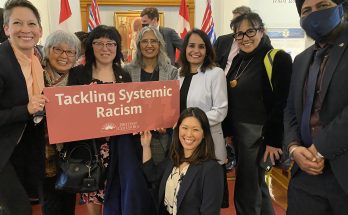Gender-based violence and harassment is a widespread issue in supply chains. Women workers in garment manufacturing, food production and hospitality are routinely subjected to unwanted touching and sexual advances and inappropriate comments, while promotion and advancement are often conditional on sex. In the most severe cases, this abuse escalates to sexual assault and rape. Despite decades of awareness and an International Labor Organization convention passed in 2019 and ratified by 49 countries, research indicates little progress has been made.
A 2024 report from Statistics Canada, for instance, has found that 47% of women have experienced some form of harassment or sexual assault in the workplace.
Rates of gender-based violence and harassment are thought to be even higher in some countries and industries. In Bangladesh, a 2018 study found at least 60% of garment workers had experienced it in the previous year. Another found 85% of garment workers in Indonesia were concerned about sexual harassment at work.
In the face of such a persistent global issue, women working in garment supply chains have pioneered a highly effective solution for tackling gender-based violence and harassment.
Worker-led binding agreements
Supported by labor unions and organizations like the Asia Floor Wage Alliance, Worker Rights Consortium and Global Labor justice, women workers have led the development of legally binding agreements with brands and suppliers to eliminate gender-based violence and harassment.
The latest of these is called the Central Java Agreement for Gender Justice. Signed in July 2024, it covers 6,250 workers producing clothing for brands like Nike and Fanatics, Inc. under licenses with universities affiliated with the Worker Rights Consortium.
Worker Rights Consortium persuaded Fanatics, which is also licensed to produce apparel bearing the Nike logo, to enter into the agreement in response to complaints of gender-based violence and harassment at two garment factories in central Java, Indonesia, owned by the Korean-based firm Ontide.
This agreement creates a union-led program to address the problem at two Indonesian factories; if factory management does not comply, it risks losing business with Nike and Fanatics.
Building on success from India to Indonesia
The 2024 Central Java Agreement builds on and incorporates key features of previous worker-led agreements to address the issue.
In particular, it builds on the 2022 Dindigul Agreement to Eliminate Gender-Based Violence and Harassment in India and the 2019 Agreements to Eliminate Gender-Based Violence and Harassment in Lesotho.
The Dindigul agreement was led by an independent, majority-Dalit trade union run by women. It established a set of legally binding agreements with major garment companies including H&M Group, Gap Inc., PVH and Eastman Exports Global Clothing Ltd.
The Lesotho agreements involved brands such as Levi Strauss & Co., Nien Hsing Textile Co., unions, women’s rights advocates and labor organizations.
While each agreement is unique, they all adhere to the principles of worker-driven social responsibility.
A new model of accountability
These agreements include worker-led detection and remediation systems to address gender-based violence and harassment. For example, under the Lesotho agreement, workers can access a 24-hour hotline operated by a local women’s organization to lodge complaints or bring them directly to the unions involved in the agreement.
The Dindigul agreement also provides multiple channels for workers to raise complaints of gender-based violence and harassment, including shop floor monitors selected by the local union (one for every 25 workers). It also offers multiple avenues for raising complaints, including to the union or to sexual harassment committees required under Indian law.
Under the Central Java Agreement, workers can bring complaints to committees aimed at eliminating the problem, to shop floor monitors or their unions. Not only do each of the agreements permit workers to request independent investigations, they all provide a wide array of remedies in the case of any incidents and violations of freedom of association.
What sets these agreements apart from most other initiatives to combat gender-based violence and harassment in supply chains is that they actually work. One study of the two-year impact of the Dindigul Agreement by Cornell University’s Global Labor Institute found that 76% of grievances were resolved in two weeks.
The report said the program “constituted a powerful monitoring mechanism, ensuring effective remediation and deterring violations” of both gender-based violence and harassment and freedom of association—briefly put, the right to voluntarily join or leave groups (like unions), and for those groups to pursue collective action.
Now, a key question is whether and to what extent these successful programs will continue to thrive and grow under the current “America First” agenda of the U.S. government.
Progress under threat
Despite their success, these worker-led initiatives face mounting challenges.
Labor organizations that support these agreements are under strain, with some potentially at high risk of collapsing. The U.S. Bureau of International Labor Affairs is cutting US$500 million in funding that supports labor enforcement efforts across 40 countries.
At the same time, company rollbacks of diversity, equity and inclusion programs are constraining, if not eliminating, the political space in which labor groups negotiate such agreements.
Tariffs and upheaval in global trade—especially efforts to redraw supply chains to evade costly tariffs—gives brands cover to withdraw commitments to worker-led initiatives and change sourcing patterns to circumvent them.
Within the United States, cuts and funding freezes—including to sexual assault prevention groups—are a worrying sign that support for preventing gender-based violence and harassment and helping its survivors are being undercut and failing.
If labor stakeholders lose the resources to support such initiatives, the impacts on women and workplaces within supply chains across the world will be devastating. These programs show that when workers lead, real change is possible, but they need continued investment and political support to survive.
Provided by The Conversation





